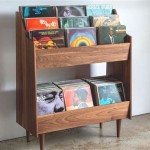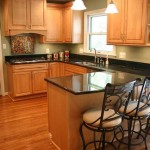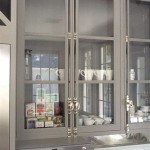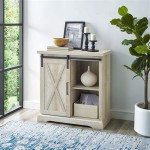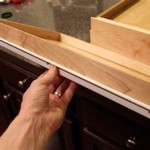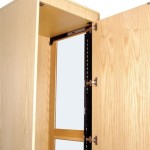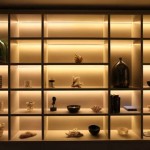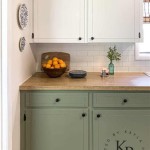What Are The Parts Of A Cabinet Called?
Understanding the anatomy of a cabinet is crucial for anyone involved in kitchen renovations, furniture making, or even simply for understanding repairs. Familiarity with cabinet terminology allows for clearer communication with contractors, designers, and suppliers. This article provides a comprehensive overview of the various parts of a cabinet, their functions, and the terms used to describe them.
Cabinets are categorized primarily as either base cabinets (those that sit on the floor) or wall cabinets (those that are hung on the wall). While the fundamental parts remain relatively consistent across both types, their size and specific features can vary. This article will address the common components shared by most cabinets, with specific mentions where differences occur.
The Carcass: The Cabinet's Structural Heart
The carcass, also referred to as the cabinet box, is the foundational structure upon which all other cabinet components are attached. It essentially defines the shape and size of the cabinet. The carcass consists of several key elements that work together to provide strength and stability.
Sides (End Panels): These are the vertical panels that form the left and right sides of the cabinet. They are critical for structural support and are often made of plywood, particleboard, or MDF (Medium-Density Fiberboard). Their thickness and material composition significantly influence the cabinet's overall durability. In exposed-end cabinets, the sides are often finished to match the door style, while in enclosed installations, they may be left unfinished or covered with a matching panel.
Bottom Panel: The bottom panel provides the base for the cabinet's contents. In base cabinets, it rests on the floor or on a toekick. It is usually constructed from the same material as the sides and is securely attached to them using screws, nails, or adhesive compounds.
Top Panel: Similar to the bottom panel, the top panel forms the upper horizontal surface of the cabinet. In wall cabinets, this panel provides a surface for attaching the cabinet to the wall. In base cabinets, it serves to provide structural integrity and a surface upon which a countertop can be installed. In some instances, especially in frameless cabinets, the top panel might be replaced by horizontal rails.
Back Panel: The back panel encloses the rear of the cabinet. It can be made of various materials, ranging from thin plywood or hardboard to thicker panels matching the side and bottom materials. The back panel contributes to the cabinet's rigidity and helps to keep its contents from falling out. A full back panel provides more stability, while a partial back panel, often seen in older or less expensive cabinets, might only cover a portion of the rear, leaving space for plumbing or electrical wiring. Some high-end cabinets feature a solid wood back panel, adding to their overall quality and aesthetic appeal.
Stiles and Rails (Face Frame Cabinets Only): In face-frame cabinets, a frame made of vertical pieces called stiles and horizontal pieces called rails is attached to the front of the carcass. The stiles run vertically along the sides of the cabinet opening, while the rails run horizontally along the top and bottom. The face frame provides additional structural support and a surface for attaching doors and drawers. The visible portion of the face frame can be made from solid wood or a wood veneer, and its design contributes significantly to the cabinet's overall style.
Toe Kick (Base Cabinets Only): The toekick is the recessed area at the bottom of a base cabinet that allows a person to stand comfortably close to the countertop. It typically consists of a separate piece of material attached to the bottom front of the cabinet. The toekick can be integral to the cabinet or a separate, adjustable piece. It can be finished to match the cabinet or covered with a decorative trim called a baseboard.
The Doors and Drawers: Access and Aesthetics
The doors and drawers provide access to the cabinet's interior and significantly contribute to its visual appeal. They come in a wide variety of styles, materials, and finishes, influencing the overall design aesthetic of the kitchen or room.
Door Panel: The main component of the cabinet door, the door panel can be solid, veneered, or a frame-and-panel construction. Solid wood doors are durable and offer a classic look, while veneer doors provide a cost-effective alternative. Frame-and-panel doors consist of a frame (stiles and rails) surrounding a central panel, which can be made of wood, glass, or other materials. The design of the door panel plays a significant role in defining the cabinet's style, ranging from traditional raised-panel designs to modern flat-slab designs.
Door Hinges: Hinges attach the doors to the cabinet frame, allowing them to swing open and closed. There are many different types of hinges available, including concealed hinges (also known as European hinges), which are hidden when the door is closed, and exposed hinges, which are visible. Concealed hinges often allow for adjustments to door alignment. The type of hinge used can affect the door's range of motion and its ability to stay closed securely.
Door Pulls/Knobs: These are the handles or knobs attached to the cabinet doors for easy opening. They are typically made of metal, wood, or plastic and come in a wide variety of styles to complement the cabinet's design. The selection of door pulls and knobs can significantly impact the overall aesthetic of the cabinets.
Drawer Box: The drawer box is the container that holds the contents of the drawer. It typically consists of four sides (front, back, and two sides) and a bottom panel. The drawer box can be made of solid wood, plywood, or particleboard. Dovetail joinery is a common method for constructing high-quality drawer boxes, providing a strong and durable connection between the sides. The inside of the drawer box may be finished with a clear coat or a drawer liner to protect the contents.
Drawer Front: The drawer front is the visible part of the drawer that is attached to the drawer box. It is typically made of the same material as the cabinet doors and is designed to match the cabinet's overall style. The drawer front can be attached to the drawer box using screws, nails, or adhesive compounds. The alignment and fit of the drawer front are crucial for a clean and professional look.
Drawer Slides: Drawer slides, also called drawer runners, are mechanisms that allow the drawer to smoothly slide in and out of the cabinet. There are different types of drawer slides available, including side-mounted slides, undermount slides, and center-mount slides. Side-mounted slides are the most common type and are attached to the sides of the drawer box and the cabinet carcass. Undermount slides are mounted underneath the drawer box and provide a cleaner look. Drawer slides can also have features such as soft-close mechanisms, which prevent the drawer from slamming shut.
Drawer Pulls/Knobs: Similar to door pulls and knobs, these are attached to the drawer front for easy opening. They are typically made of metal, wood, or plastic and come in a variety of styles to complement the cabinet's design.
Interior Components and Hardware: Functionality and Organization
Beyond the carcass, doors, and drawers, cabinets often incorporate various interior components and hardware to enhance their functionality and organization. These elements contribute to the overall usability and storage capacity of the cabinet.
Shelves: Shelves are horizontal surfaces inside the cabinet that provide storage space. They can be fixed or adjustable. Fixed shelves are permanently attached to the cabinet sides, while adjustable shelves can be moved to different heights. Shelves are typically made of plywood, particleboard, or glass. The weight capacity of the shelves is an important consideration, particularly for storing heavy items.
Shelf Supports: These are the hardware components that hold the shelves in place. They can be shelf pins, shelf clips, or shelf standards. Shelf pins are small metal or plastic pegs that fit into holes drilled in the cabinet sides. Shelf clips are similar to shelf pins but provide a more secure hold. Shelf standards are metal strips with slots or holes that allow for adjustable shelf placement.
Roll-Out Trays: Roll-out trays, also known as pull-out shelves, are drawers without fronts that slide out from the cabinet. They provide easy access to items stored deep within the cabinet. Roll-out trays are often used in base cabinets to store pots, pans, and other kitchen essentials.
Lazy Susans: A lazy susan is a rotating shelf that is typically installed in corner cabinets to maximize space and accessibility. It allows users to easily reach items stored in the back of the cabinet. Lazy susans can be full-circle or pie-cut shaped.
Cabinet Lighting: Interior cabinet lighting can illuminate the contents of the cabinet, making it easier to find items. Lighting options include LED strip lights, puck lights, and spotlights. Cabinet lighting can be wired directly into the electrical system or powered by batteries.
Cabinet Feet/Legs: These are the supports used on base cabinets in lieu of, or in addition to, a toekick. They allow for adjustable height and a more furniture-like appearance. Cabinet legs are often used in modern and contemporary kitchen designs.
Panel Inserts: Glass, metal or decorative wood inserts that fill the center portion of a cabinet door. These elements can drastically change the aesthetic of the entire cabinet.
Cabinet Crown Molding: A decorative trim piece installed at the top of wall cabinets to give a finished, more elegant look. It fills the space between the top of the cabinet and the ceiling.
By understanding the names and functions of each part of a cabinet, individuals can better participate in discussions with design professionals, accurately describe desired features, and troubleshoot potential issues that may arise during cabinet installation or repair, leading to a more informed and successful outcome.

Cabinet Parts And Profiles

Parts Of A Cabinet Doors

Anatomy Of A Cabinet Breaking Down The Parts And Pieces Vital Turnaround Furniture Works

Cabinets What Is The Name Of This Part Drawers Home Improvement Stack Exchange

Parts Of A Cabinet Doors

Kitchen Cabinet Terms Cabinets Of The Desert

Anatomy Of A Cabinet Door Crystal Cabinets

Cabinets Countertops Home Preservation Manual
Kitchen Cabinets 1 Rona

Kitchen Definitions The Classics
Related Posts

